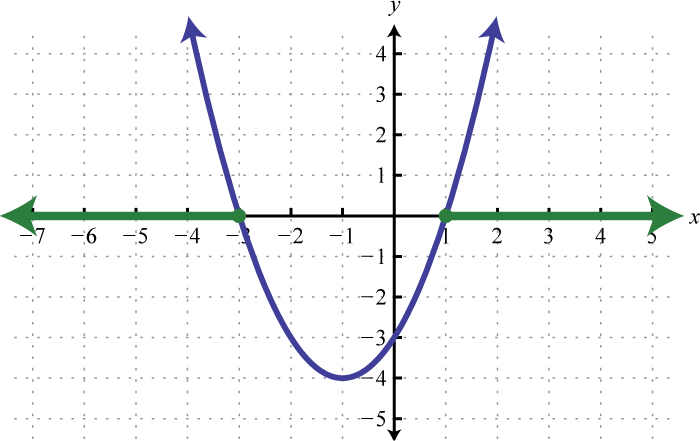Solve by extracting the roots.
The height in feet of an object dropped from a 20-foot stepladder is given by where t represents the time in seconds after the object has been dropped. How long does it take the object to hit the ground after it has been dropped? Round to the nearest tenth of a second.
A 20-foot ladder, leaning against a building, reaches a height of 19 feet. How far is the base of the ladder from the wall? Round to the nearest tenth of a foot.
Solve by completing the square.
Solve using the quadratic formula.
The height in feet of a baseball tossed upward at a speed of 48 feet per second from the ground is given by the function, , where t represents the time in seconds after the ball is tossed. At what time does the baseball reach a height of 18 feet? Round off to the nearest hundredth of a second.
The height in feet reached by a model rocket launched from a 3-foot platform is given by the function where t represents time in seconds after launch. At what times will the rocket reach 1,000 feet? Round off to the nearest tenth of a second.
Use the discriminant to determine the number and type of solutions.
Solve using any method.
The length of a rectangle is 3 inches less than twice the width. If the area of the rectangle measures 30 square inches, then find the dimensions of the rectangle. Round off to the nearest hundredth of an inch.
The value in dollars of a new car is modeled by the function where t represents the number of years since it was purchased. Determine the age of the car when its value is $18,000.
Find all solutions.
Find the set of all roots.
Find a quadratic equation with integer coefficients and the given set of solutions.
Determine the x- and y-intercepts.
Find the vertex and the line of symmetry.
Graph. Find the vertex and the y-intercept. In addition, find the x-intercepts if they exist.
Determine the maximum or minimum y-value.
Rewrite in vertex form and determine the vertex.
Graph. Find the vertex and the y-intercept. In addition, find the x-intercepts if they exist.
The value in dollars of a new car is modeled by where t represents the number of years since it was purchased. Determine the age of the car when its value is at a minimum.
The height in feet of a baseball tossed upward at a speed of 48 feet per second from the ground is given by the function, , where t represents the time in seconds after it is tossed. What is the maximum height of the baseball?
The rectangular area in square feet that can be enclosed with 200 feet of fencing is given by where w represents the width of the rectangular area in feet. What dimensions will maximize the area that can be enclosed?
A manufacturing company has found that production costs in thousands of dollars are modeled by where x represents the number of employees. Determine the number of employees that will minimize production costs.
Solve. Present answers using interval notation.
Find the domain of the function.
Solve. Present answers using interval notation.
±9
,
seconds
−5,1
−2, 1
, 2
,
−1, 0
The ball will reach 18 feet at 0.44 seconds and again at 2.56 seconds.
Two irrational solutions
One rational solution
−8, 12
−4, −1
Length: 6.38 inches; width: 4.69 inches
,
,
16
−3,
1,
,
x-intercepts: (−4, 0), ; y-intercept: (0, −12)
x-intercepts: none; y-intercept: (0, 7)
Vertex: (2, −16); line of symmetry:
Vertex: ; line of symmetry:
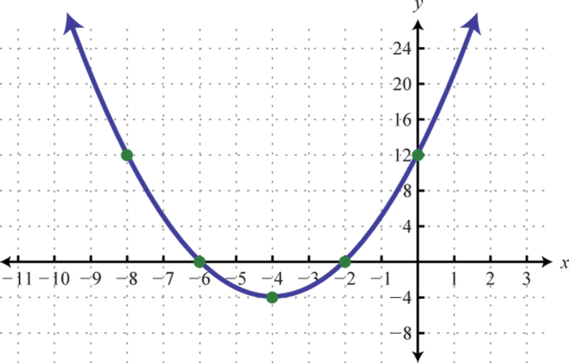

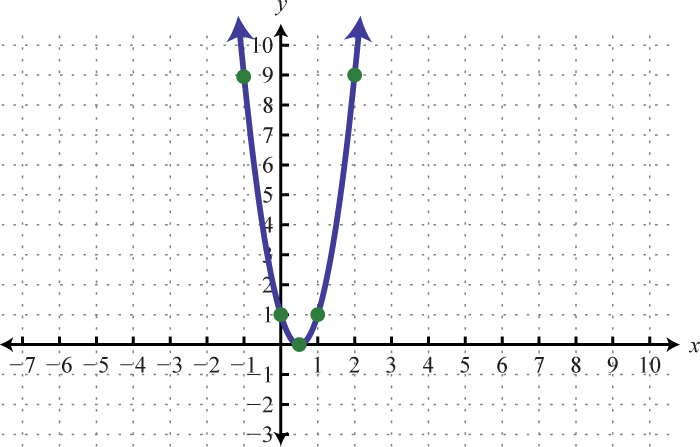
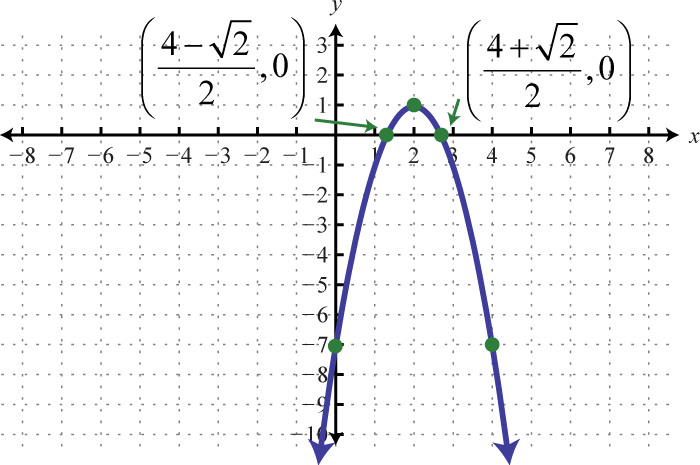
Minimum:
Maximum:
; vertex:
; vertex:
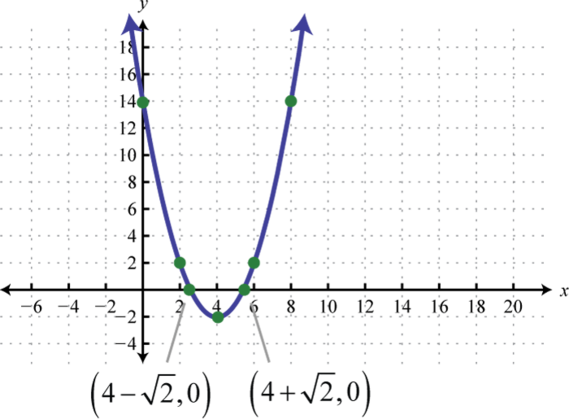


The car will have minimum value 12 years after it is purchased.
Length: 50 feet; width: 50 feet
Ø
Solve by extracting the roots:
Solve by completing the square:
Solve using the quadratic formula.
Find a quadratic equation with integer coefficients and solutions
The area of a rectangle is 22 square centimeters. If the length is 5 centimeters less than twice the width, then find the dimensions of the rectangle. Round off to the nearest tenth of a centimeter.
Assuming dry road conditions and average reaction times, the safe stopping distance in feet of a certain car is given by where x represents the speed of the car in miles per hour. Determine the safe speed of the car if you expect to stop in 100 feet. Round off to the nearest mile per hour.
Find all solutions.
Graph. Find the vertex and the y-intercept. In addition, find the x-intercepts if they exist.
Given the function defined by :
The height in feet of a water rocket launched from the ground is given by the function where t represents the number of seconds after launch. What is the maximum height attained by the rocket?
Sketch the graph and use it to solve the given inequality.
Graph and find x where
Graph and find x where
Solve. Present answers using interval notation.
36 miles per hour
−3,
16

